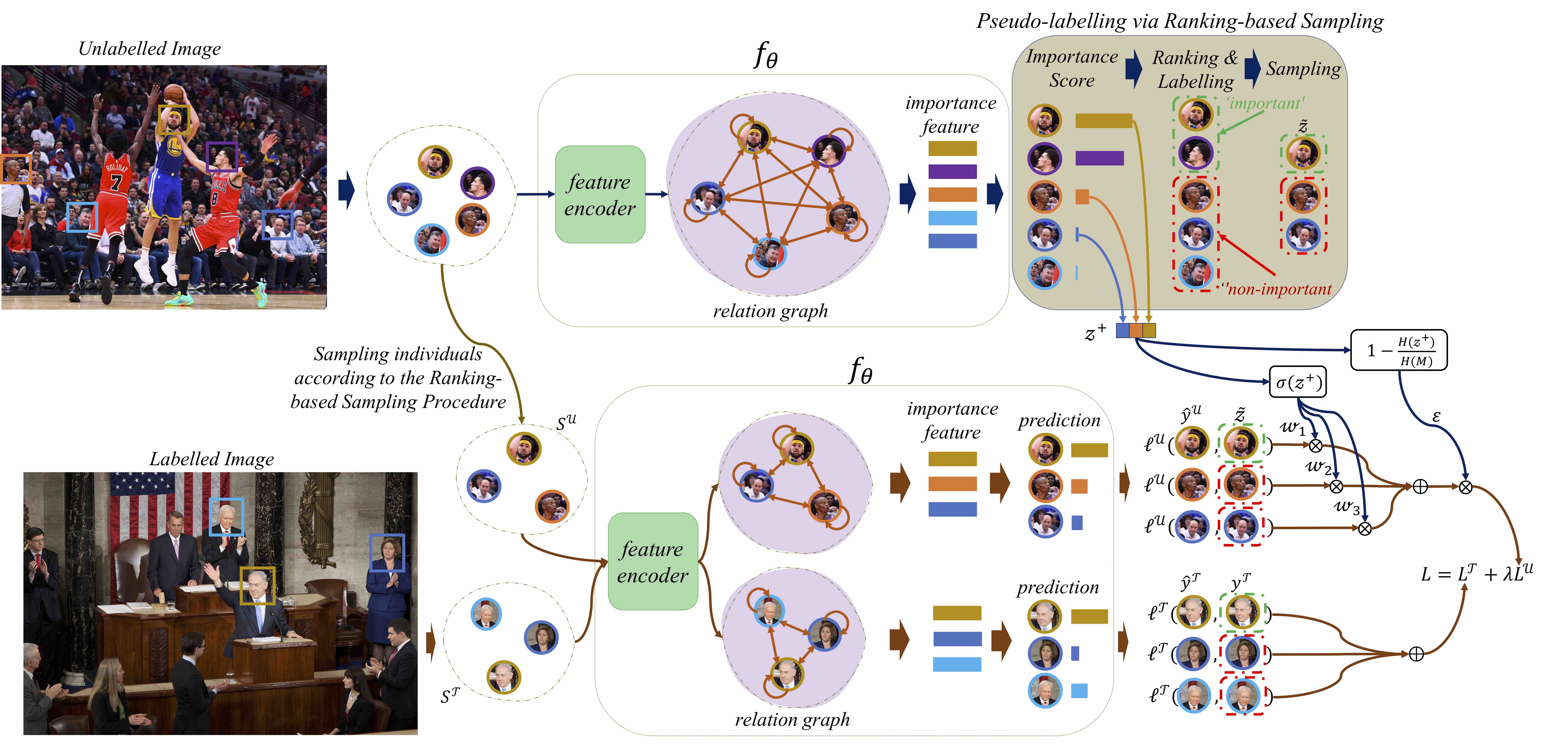Fa-Ting Hong

Abstract
Important people detection is to automatically detect the individuals who play the most important roles in a social event image, which requires the designed model to understand a high-level pattern. However, existing methods rely heavily on supervised learning using large quantities of annotated image samples, which are more costly to collect for important people detection than for individual entity recognition (e.g., object recognition). To overcome this problem, we propose learning important people detection on partially annotated images. Our approach iteratively learns to assign pseudo-labels to individuals in un-annotated images and learns to update the important people detection model based on data with both labels and pseudo-labels. To alleviate the pseudo-labelling imbalance problem, we introduce a ranking strategy for pseudo-label estimation, and also introduce two weighting strategies: one for weighting the confidence that individuals are important people to strengthen the learning on important people and the other for neglecting noisy unlabelled images (i.e., images without any important people). We have collected two large-scale datasets for evaluation. The extensive experimental results clearly confirm the efficacy of our method attained by leveraging unlabelled images for improving the performance of important people detection.
Download paper here [Poster]
Download EMS dataset
Download ENCAA dataset
Recommended citation: Fa-Ting Hong, Wei-Hong Li and Wei-Shi Zheng. Learning to Detect Important People in Unlabelled Images for Semi-supervised Important People Detection. In Computer Vision and Pattern Recognition, 2020.